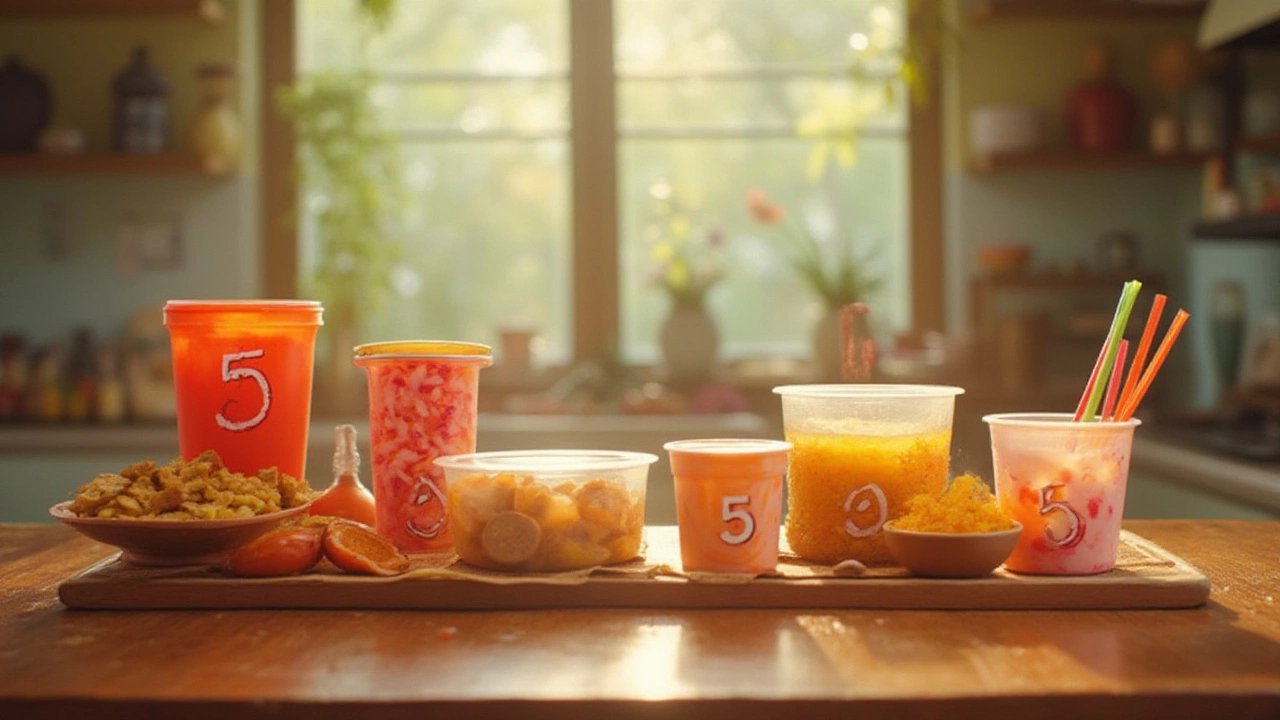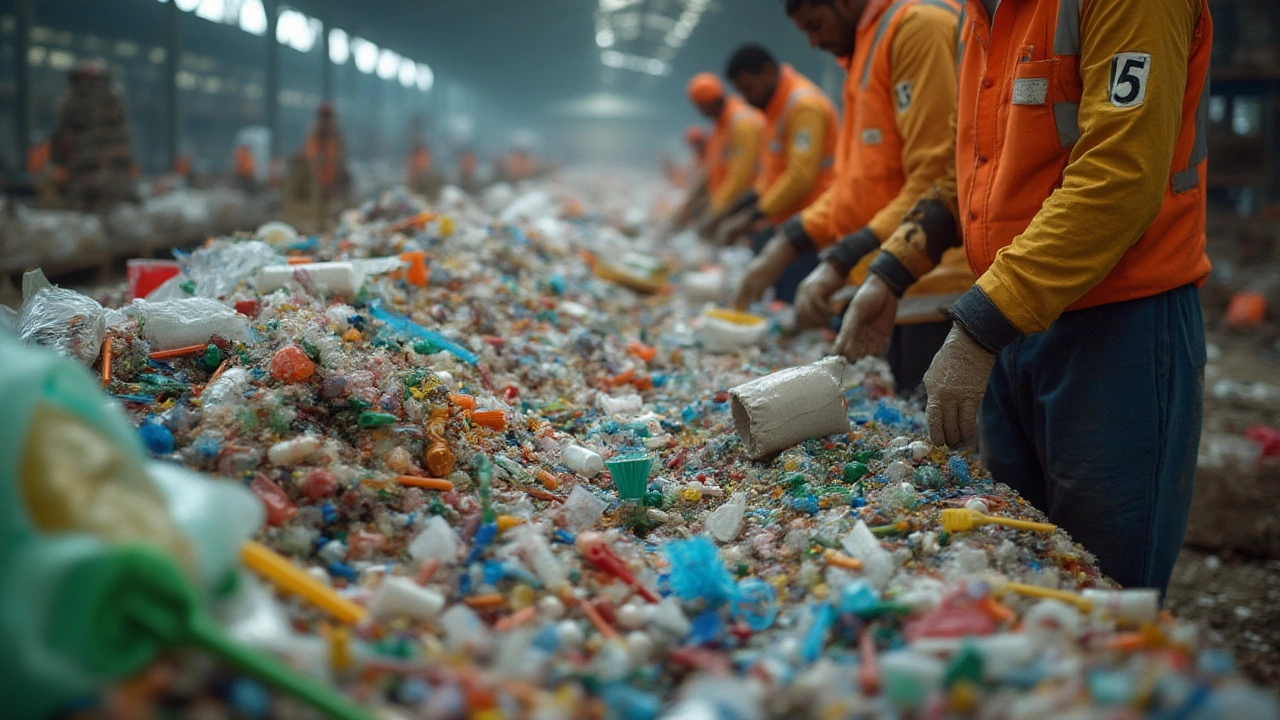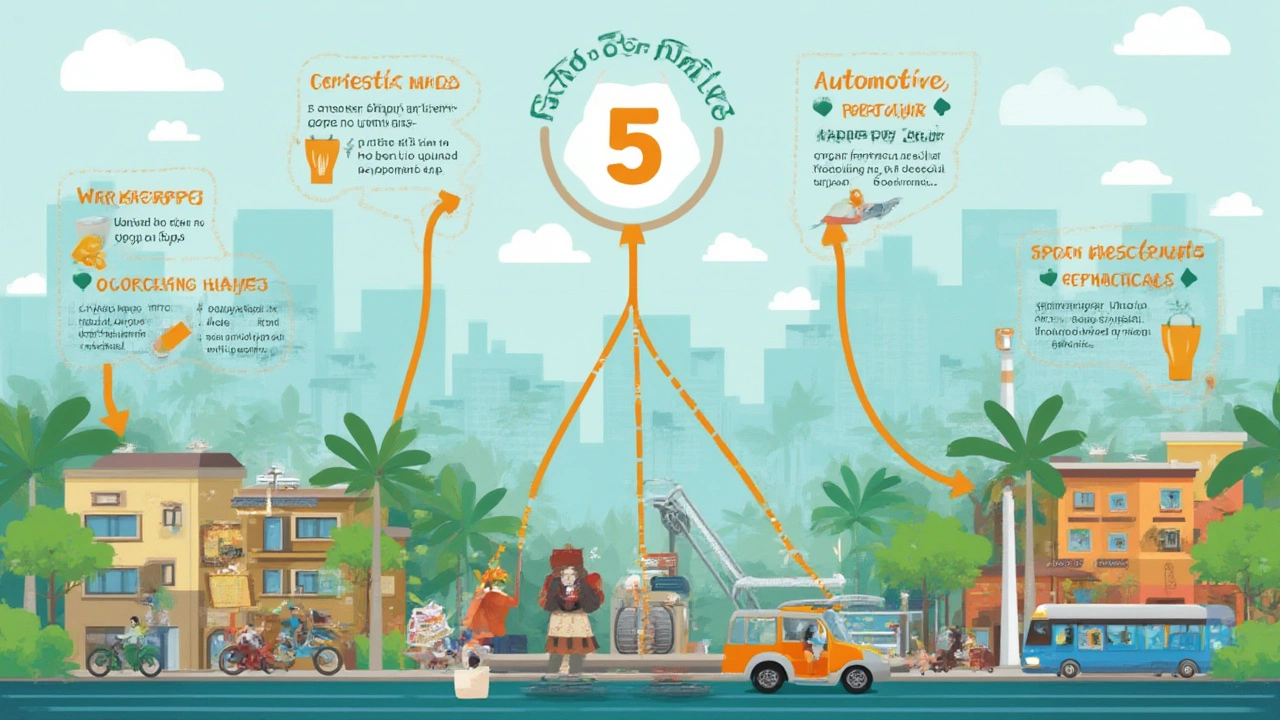
Flip over a yogurt cup or a takeout container and you’ll spot a little triangle stamped with the number 5. That’s not just decoration. It’s basically a tracking chip for plastic, letting us peek into what it’s made from and how it can be reused. But why does code 5 matter? And what happens after you toss it into the recycling bin? Most folks just see plastic as plastic, but not every plastic is created equal.
Code 5 plastic—also called polypropylene or PP—flies under most people’s radar, but it's all over our daily routines. My dog Max’s food bowl, reusable water bottles, and even medicine bottles at the pharmacy are often made from it. Yet, there’s a lot of fuzziness about what makes polypropylene special and if it’s truly safe around food, kids, or pets. That's a big deal since plastic touches just about everything—sometimes literally, like when Max chews on leftovers in his bowl.
What is Code 5 Plastic and Where Do You Find It?
Polypropylene (PP), stamped with a bold “5” inside the recycling triangle, is a thermoplastic polymer—that just means it softens when heated and hardens again once it cools. Compared to other common plastics (like PET, PVC, LDPE), PP stands out for its toughness, flexibility, and resistance to chemicals. In other words, it’s the “tough guy” of the plastic world but isn’t heavy or brittle like some cousins.
Because of these perks, PP crops up everywhere:
- Food storage containers and Tupperware
- Yogurt, margarine, and butter tubs
- Straws, bottle caps, and flip-top lids
- Prescription medicine bottles
- Microwave-safe containers
- Car bumpers, dashboards, and interior car trims
- Diaper linings
- Rope, rugs, and textiles
- Reusable ice packs
- Pipes and plastic chairs
- Dishwasher-safe plastic items (because PP can survive high heat)
If you look at the little triangle numbered 5 when sorting plastics at home, it’s usually on solid, semi-flexible stuff that won’t warp in a hot car or break if you drop it from the counter. In fact, code 5 plastic is prized for resisting stress-cracking and chemical leaching—important when it’s in contact with your food or used in medical supplies.
PP is relatively young compared to other plastics. It was first polymerized in 1951 and hit mass production only in the late 1950s, after scientists figured out how to create the crystalline structure that makes it so handy. Since then, its production has soared. According to recent industry data, about 80 million metric tons of PP are produced worldwide every year—making it the second most produced plastic after polyethylene (the stuff in shopping bags and water bottles).
Although you’ll find code 5 plastics mostly in food or home goods, it has some high-stake jobs too. Hospitals can’t run without it. Syringe barrels, pill bottles, surgical tools—the list goes on. One of the coolest quirks about PP is its hydrophobic nature. Water just beads and rolls off. That’s why it makes sense in everything from moisture-proof packaging to multilayer face masks everyone scrambled for during the pandemic.

Is Code 5 Plastic Safe for Food, Pets, and The Environment?
With stories of microplastics and chemical leaching swirling online, it’s fair to wonder—should you trust code 5 plastic for food and drink? Polypropylene is considered one of the safer plastics out there. The FDA approves it for food contact, and the leaching of harmful chemicals is much lower compared to PVC or polystyrene (so, no “plasticky” taste in your salad or Max’s kibbles).
Ever microwave leftovers in a plastic container and worry about it melting or releasing weird stuff? Here’s the thing—PP has a higher melting point (around 130–170°C or 266–338°F), which means it can survive a spin in the microwave or a cycle in the dishwasher. Just make sure the item is marked as microwave-safe. Always play it safe: don’t reuse single-use PP containers too much or let them get too scratched or discolored, since old plastics can eventually break down and release bits you’d rather not eat.
What about pets? Max’s food and water bowls are built to take a beating. Polypropylene bowls are safer than low-grade plastics because they’re less likely to crack or release odd flavors. Plus, they’re easier to clean, reducing the chance for bacteria to grow. Still, ditch anything that gets rough edges or gouges—bacteria love those micro-corners, and no one wants a sick pet.
People ask about toxins like BPA (bisphenol-A) and phthalates, but PP plastics generally don’t use BPA. Most major manufacturers highlight “BPA-free” for their products, especially food containers and baby bottles. In fact, polypropylene’s chunky molecular structure means even when it breaks down, it doesn’t release the same hormone-disrupting chemicals as polycarbonate or PVC.
You can see how PP compares to other common food plastics in the table below:
| Plastic Code | Material Name | Common Uses | Melting Point (°C) | BPA / Phthalate Content |
|---|---|---|---|---|
| 1 | PET (Polyethylene Terephthalate) | Water bottles, soft drink bottles | ~260 | Usually None |
| 2 | HDPE (High-Density Polyethylene) | Milk jugs, detergent bottles | 120–180 | None |
| 5 | PP (Polypropylene) | Food containers, straws, medicine bottles | 130–170 | None |
| 6 | PS (Polystyrene) | Disposable forks, foam cups | 100–120 | Possible |
| 7 | Other (incl. Polycarbonate, PLA) | Baby bottles, reusable water bottles | 110–267 | Possible |
One snarl: the environment. PP isn’t a saint here—it’s definitely not biodegradable. It can take hundreds of years to break down in a landfill. Even so, compared to PVC or polystyrene, PP doesn’t release as many persistent pollutants. The good news? It’s not the worst offender in the plastic world, but it’s far from guilt-free if littered or dumped where it shouldn’t be.
Still, you can make smarter choices. Go for reusable containers, recycle properly, and don’t let Max chew up stray bottle caps—those bits are tough for even the best dog tummies.

Recycling Code 5 Plastics: Challenges and Useful Tips
So, is code 5 plastic easy to recycle? Sadly, that’s where things get messy. Even though most recycling bins say “yes” to code 5, real-world recycling rates for PP still hover around 1-3% globally. Compare that to PET (water bottles), which sees about 20-30% recycling rates depending on the country. The biggest barrier is that PP products come in all shapes, sizes, and colors, making separation tough for recyclers. And because PP sometimes holds oily or greasy food, the cleaning required is higher than for other plastics.
If you want your code 5 plastic to actually get another shot at life, here’s what really helps:
- Rinse out all containers before tossing—no leftover food, please
- Flip open caps and remove liners or labels where possible; recycling machines often sort by material and color
- Don’t “wishcycle”—if you aren’t sure something is PP, don’t force it into the bin hoping it’ll get recycled (it’ll just gum up the works)
- Some areas have special collection centers for PP because it’s in high demand for recycled products like car parts, storage bins, and new food containers
There’s a new push to improve PP recycling. Curbside programs are expanding, companies are redesigning packaging, and “closed-loop” systems are starting to take off—where companies collect back their own used PP for reprocessing. The Association of Plastics Recyclers in the U.S. even launched a Polypropylene Recycling Coalition, funnelling millions into facilities to handle more PP. Europe’s catching up, with some countries piloting collection bins for yogurt cups only—talk about single-minded recycling!
So what happens when PP is recycled? Unlike some plastics, it doesn’t lose as much strength or flexibility. Recycled polypropylene becomes sturdy products: playground equipment, DIY tool boxes, car battery casings, or even drainage pipes. Some creative companies turn recycled PP into everyday stuff like coat hangers, reusable shopping bags, or even furniture. These uses keep PP out of the landfill—and save resources in the process.
There are a couple of cool home hacks too. Some crafty folks use clean PP containers to organize drawers, store nuts and bolts, or start seedling plants. Just make sure anything reused stays clean and isn’t degraded or cracked, as older plastic bits break down over time.
One interesting new trend: chemical recycling. Unlike old-school “chop and melt” methods, chemical recycling breaks PP down to its raw building blocks so it can be made into new plastic again, almost as good as virgin. While it’s still more expensive and rare, this could seriously boost PP’s green credentials in the years ahead.
So next time you grab a takeout or pile up empty yogurt cups, check for the 5 inside the triangle. You’re not just sorting trash—you’re taking a small but powerful step to make sure tough, useful polypropylene keeps working for us, not piling up as waste. And if you’ve got a dog like Max, maybe save a clean PP container for homemade treats. Smart choices like that don’t just help you—they help everyone, one bowl (or crunchy snack) at a time.